Vibration Control of a Power Transmission Tower with Pounding Tuned Mass Damper under Multi-Component Seismic Excitations
Abstract
:1. Introduction
2. Vibration Reduction Mechanism of PTMD
3. Modeling of a Transmission Tower with a PTMD
3.1. Structural Model
3.2. Simulation of the PTMD
4. Numerical Analysis and Discussion
4.1. Selection of Seismic Waves
4.2. Vibration Control of the PTMD
4.3. Parametric Study
4.3.1. Effect of Mass Ratio
4.3.2. Effect of Seismic Intensity
4.3.3. Effect of the Gap
4.3.4. Effect of the Incident Angle
5. Conclusions
- (1)
- Compared with the TMD, the PTMD is more effective in reducing the vibration of a transmission tower under multi-component seismic excitations. The vibration reduction ratios of the transmission tower with PTMD are varied with different seismic waves.
- (2)
- The reduction ratios of the transmission tower with PTMD in the longitudinal and transverse directions have the same trend with the increase of mass ratio until 2%. The mass ratio of 2% is the optimal result.
- (3)
- The reduction ratios of the transmission tower with the PTMD in the longitudinal and transverse directions decrease with the increase of the ground motion intensity, but the ground motion intensity has an insignificant influence on the reduction ratio.
- (4)
- The reduction ratio of the transmission tower with the PTMD in the longitudinal and transverse directions increases first, and then decreases with the increase of the gap. The influence of the gap on the control effect of the PTMD is not significant.
- (5)
- The reduction ratio in the longitudinal direction increases gradually with the increase of the incident angle. Compared with the reduction ratio in the longitudinal direction, the trend of the reduction ratio in the transverse direction is just the opposite. The incident angle has a significant influence on the reduction ratio.
Acknowledgments
Author Contributions
Conflicts of Interest
References
- Hall, F.J. Northridge Earthquake of January 17, 1994: Reconnaissance Report; Earthquake Engineering Research Institute: Oakland, CA, USA, 1995; Volume 11, pp. 212–215. [Google Scholar]
- Luo, Q.F. Damages to life-line systems caused by Hyogoken Nanbu, Japan, earthquake and their recovery. J. Catastrophol. 1997, 12, 43–48. [Google Scholar]
- Zhang, Z.Y.; Zhao, B.; Cao, W.W. Investigation and Preliminary Analysis of Damages on the Power Grid in the Wenchuan Earthquake of M8.0. Electr. Power Technol. Econ. 2008, 20, 1–4. [Google Scholar]
- Yu, Y.Q. Investigation and Analysis of Electric Equipment Damage in Sichuan Power Grid Caused by Wenchuan Earthquake. Power Syst. Technol. 2008, 32, 1–6. [Google Scholar]
- Zhang, D.C.; Zhao, W.B.; Liu, M.Y. Analysis on seismic disaster damage cases and their causes of electric power equipment in 5.12 Wenchuan earthquake. J. Nanjing Univ. Technol. 2009, 31, 44–48. [Google Scholar]
- Liu, R.S.; Liu, J.L.; Yan, D.Q. Seismic damage investigation and analysis of electric power system in Lushan Ms 7.0 earthquake. J. Nat. Disasters 2013, 22, 83–90. [Google Scholar]
- Kilroe, N. Aerial method to mitigate vibration on transmission towers. In Proceedings of the 2000 IEEE ESMO—2000 IEEE 9th International Conference on Transmission and Distribution Construction, Operation and Live-Line Maintenance Proceedings, Montreal, QC, Canada, 8–12 October 2000; pp. 187–194. [Google Scholar]
- Battista, R.C.; Rodrigues, R.S.; Pfeil, M.S. Dynamic behavior and stability of transmission line towers under wind forces. J. Wind Eng. Ind. Aerodyn. 2003, 91, 1051–1067. [Google Scholar]
- Park, J.H.; Moon, B.W.; Min, K.W. Cyclic loading test of friction-type reinforcing members upgrading wind-resistant performance of transmission towers. Eng. Struct. 2007, 29, 3185–3196. [Google Scholar]
- Chen, B.; Zheng, J.; Qu, W. Control of wind-induced response of transmission tower-line system by using magnetorheological dampers. Int. J. Struct. Stab. Dyn. 2009, 9, 661–685. [Google Scholar]
- Li, L.; Cao, H.; Ye, K. Simulation of galloping and wind-induced vibration control. Noise Vib. Worldw. 2010, 41, 15–21. [Google Scholar]
- Tian, L.; Yu, Q.; Ma, R. Study on seismic control of power transmission tower-line coupled system under multicomponent excitations. Math. Probl. Eng. 2013, 2013, 1–12. [Google Scholar]
- Ema, S.; Marui, E. A fundamental study on impact dampers. Int. J. Mach. Tools Manuf. 1994, 34, 407–421. [Google Scholar]
- Collette, F.S. A combined tuned absorber and pendulum impact damper under random excitation. J. Sound Vib. 1998, 216, 199–213. [Google Scholar]
- Cheng, C.C.; Wang, J.Y. Free vibration analysis of a resilient impact damper. Int. J. Mech. Sci. 2003, 45, 589–604. [Google Scholar]
- Zhang, P.; Song, G.B.; Li, H.N. Seismic control of power transmission tower using pounding TMD. J. Eng. Mech. 2013, 139, 1395–1406. [Google Scholar]
- Zhang, P.; Li, L.; Patil, D.; Singla, M.; Li, H.N.; Mo, Y.L.; Song, G. Parametric study of pounding tuned mass damper for subsea jumpers. Smart Mater. Struct. 2016, 25, 15–28. [Google Scholar]
- Song, G.B.; Zhang, P.; Li, L.Y.; Singla, M.; Patil, D.; Li, H.N.; Mo, Y.L. Vibration control of a pipeline structure using pounding tuned mass damper. J. Eng. Mech. 2016, 142, 04016031. [Google Scholar]
- Li, H.N.; Zhang, P.; Song, G.; Patil, D.; Mo, Y. Robustness study of the pounding tuned mass damper for vibration control of subsea jumpers. Smart Mater. Struct. 2015, 24, 095001. [Google Scholar]
- Li, L.; Song, G.; Singla, M.; Mo, Y.L. Vibration control of a traffic signal pole using a pounding tuned mass damper with viscoelastic materials (II): Experimental verification. J. Vib. Control 2013, 21, 670–675. [Google Scholar]
- GB 50011-2010. In Code for Seismic Design of Buildings; Ministry of Construction of the People’s Republic of China and the State Quality Supervision and Quarantine Bureau: Beijing, China, 2010.


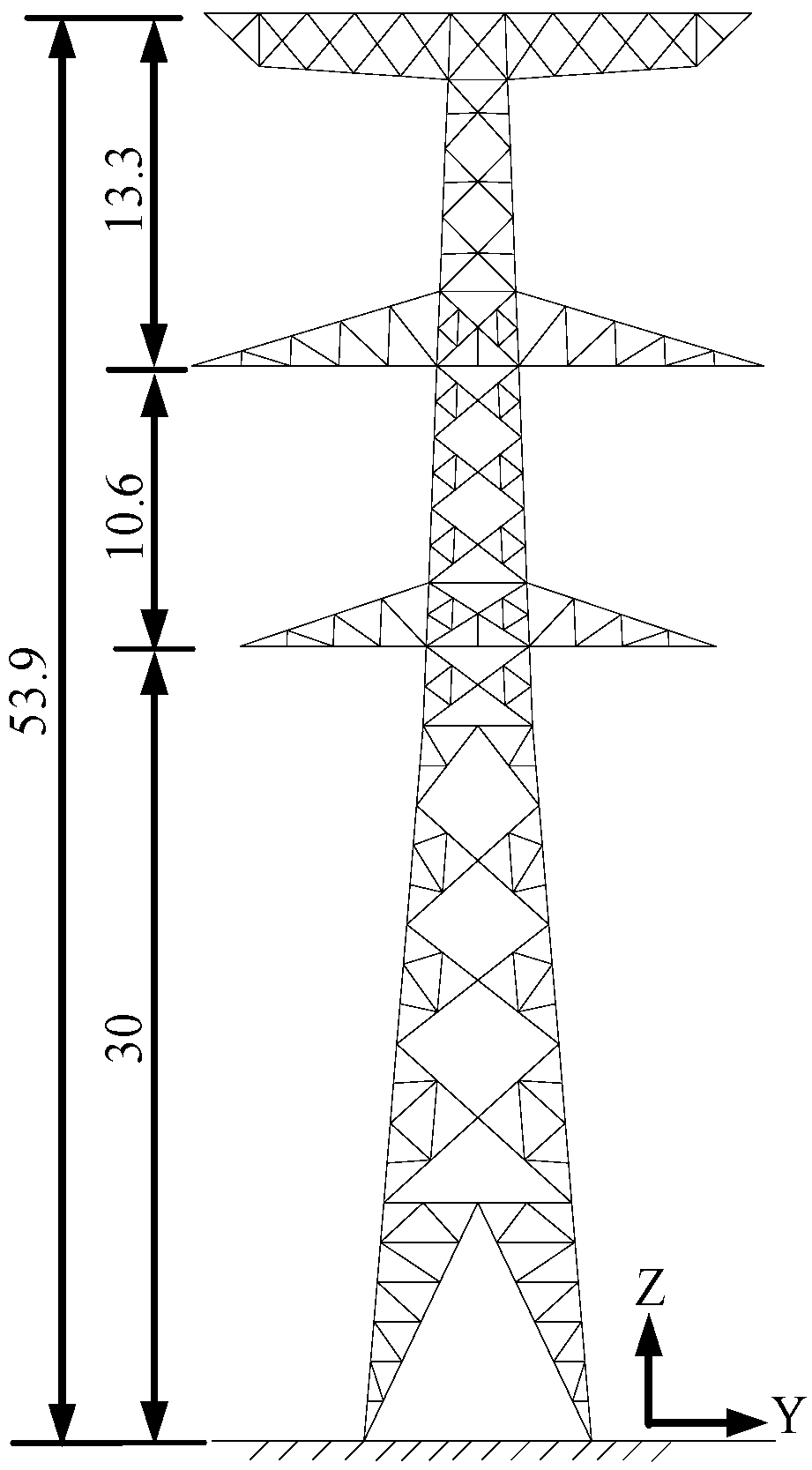

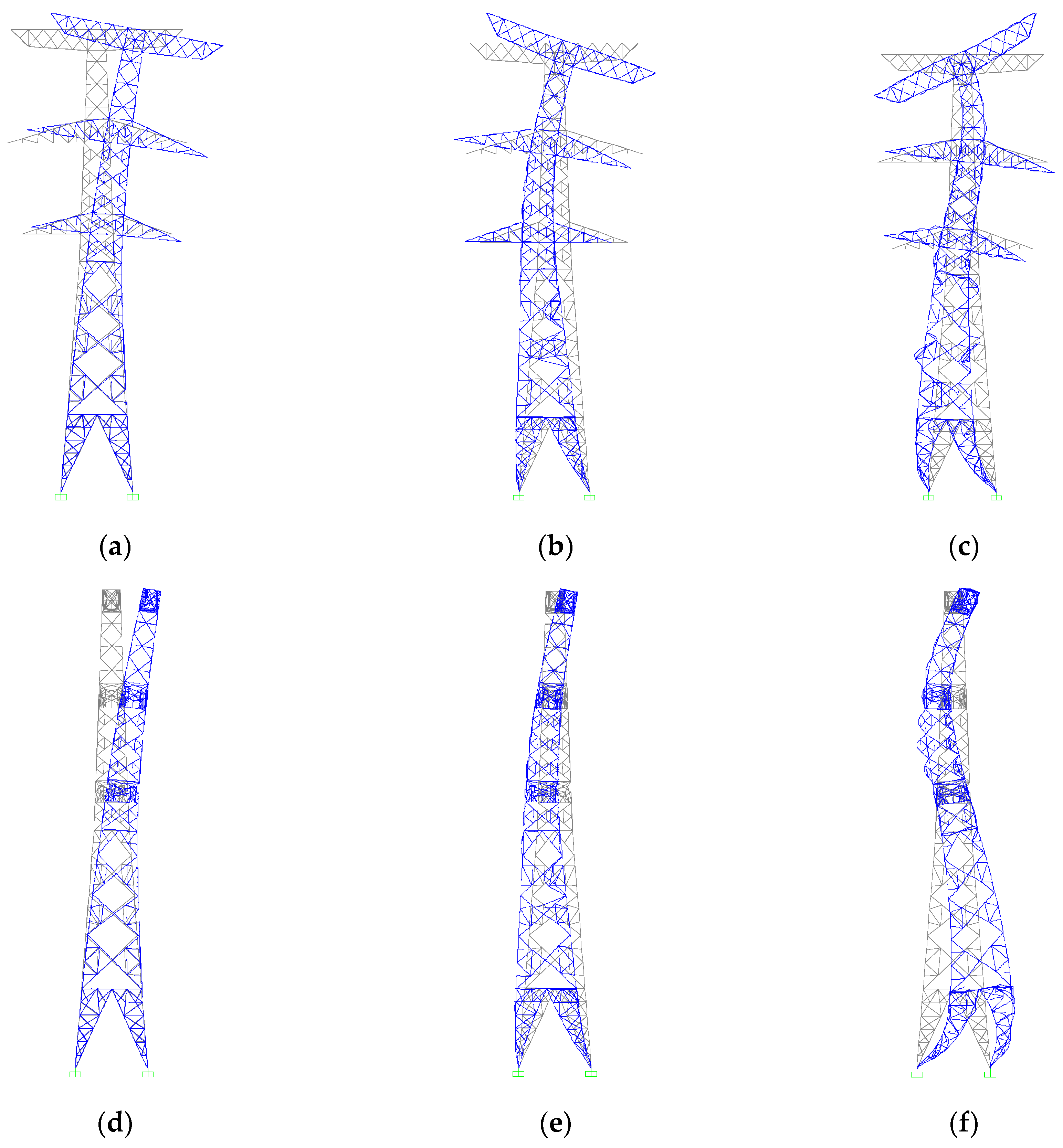
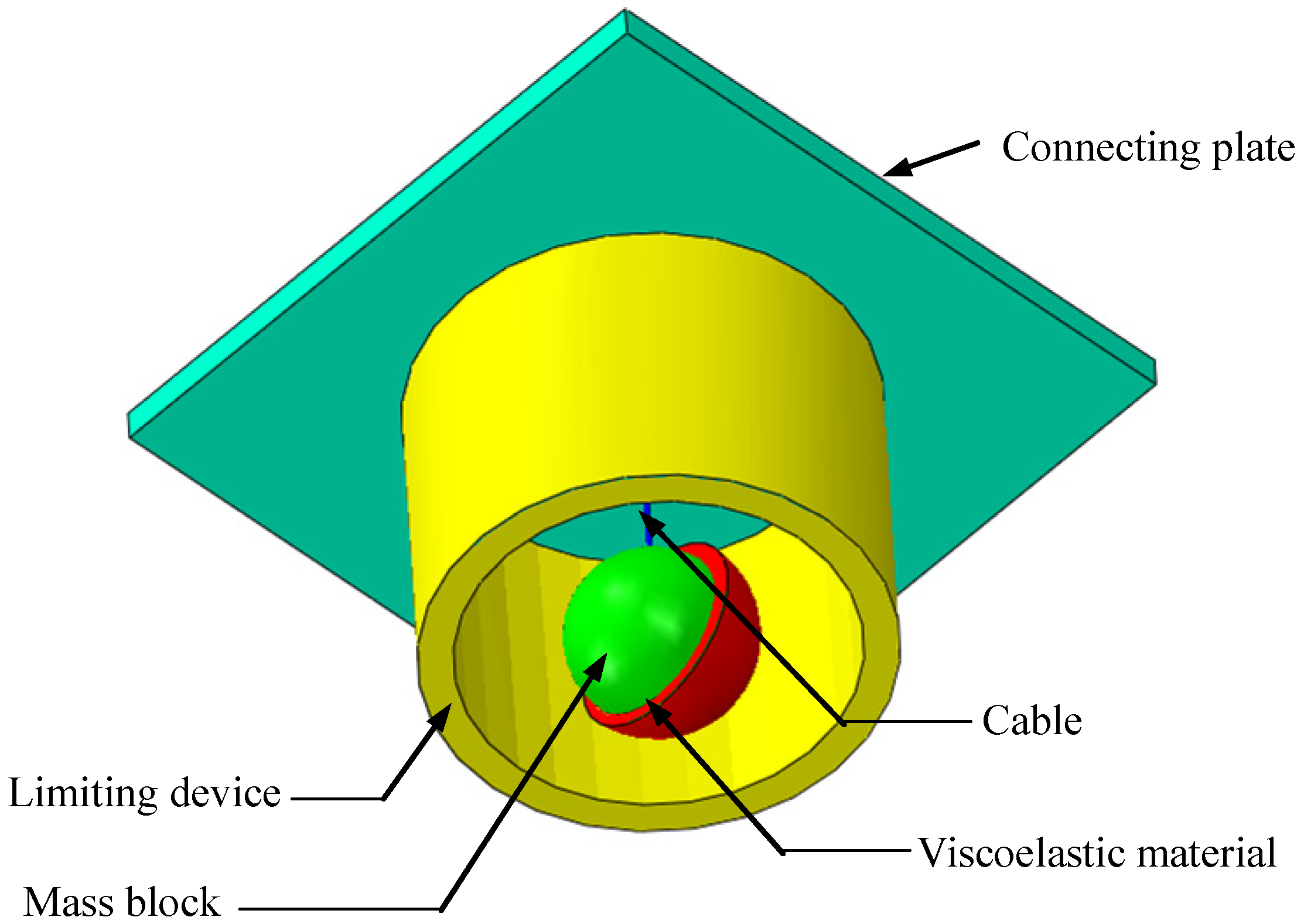

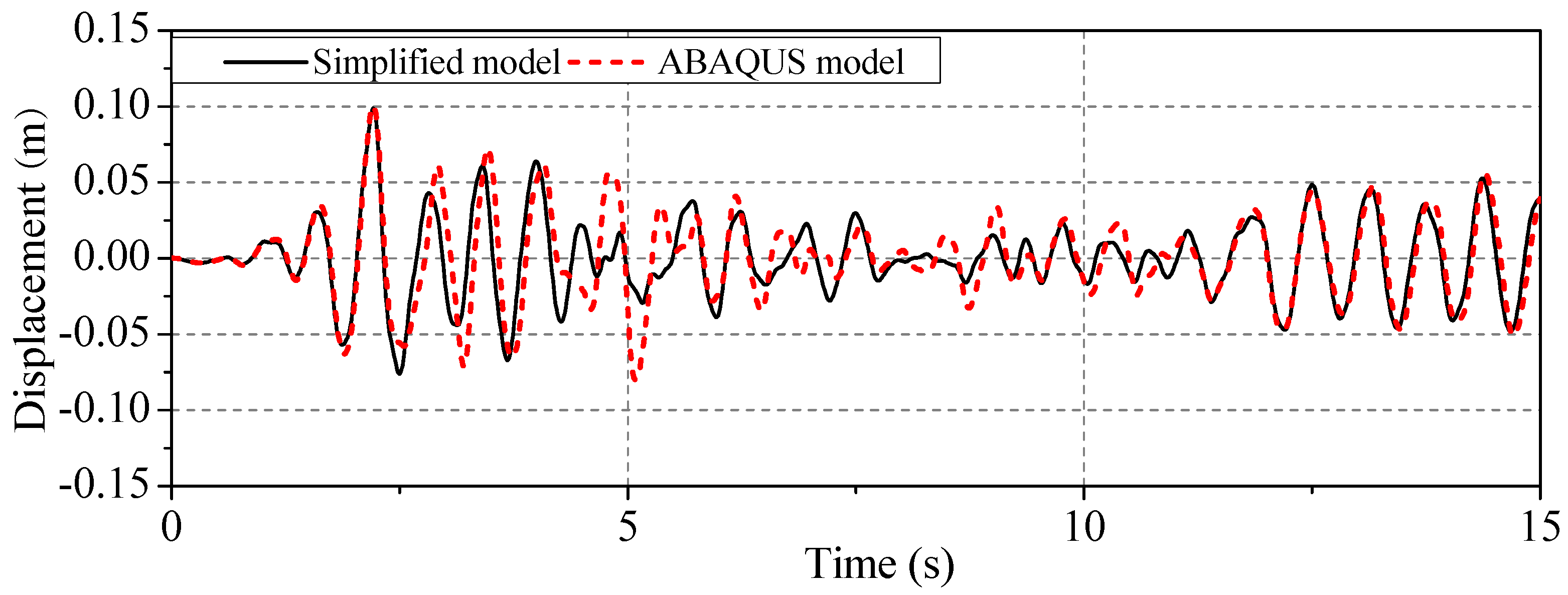
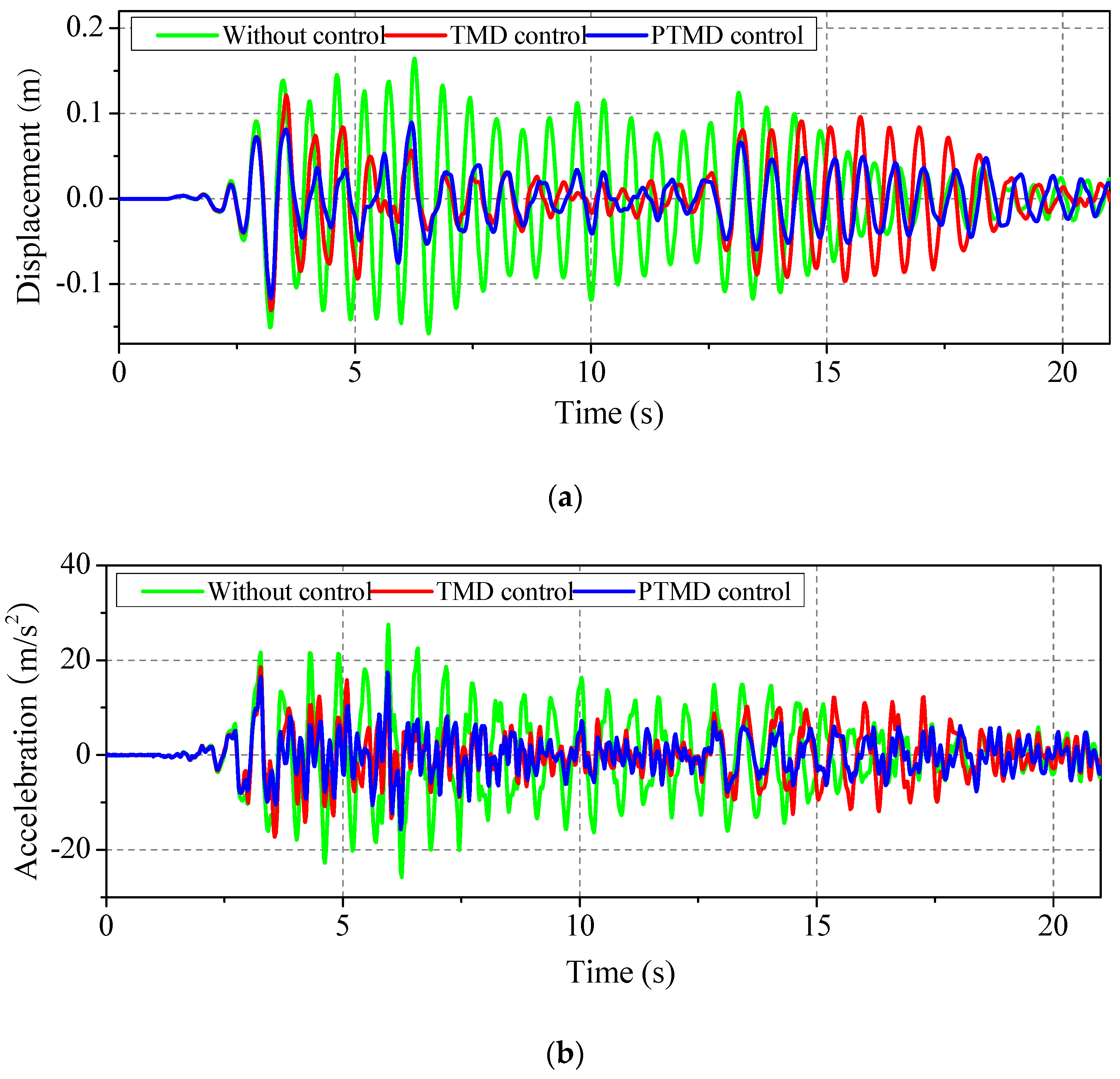
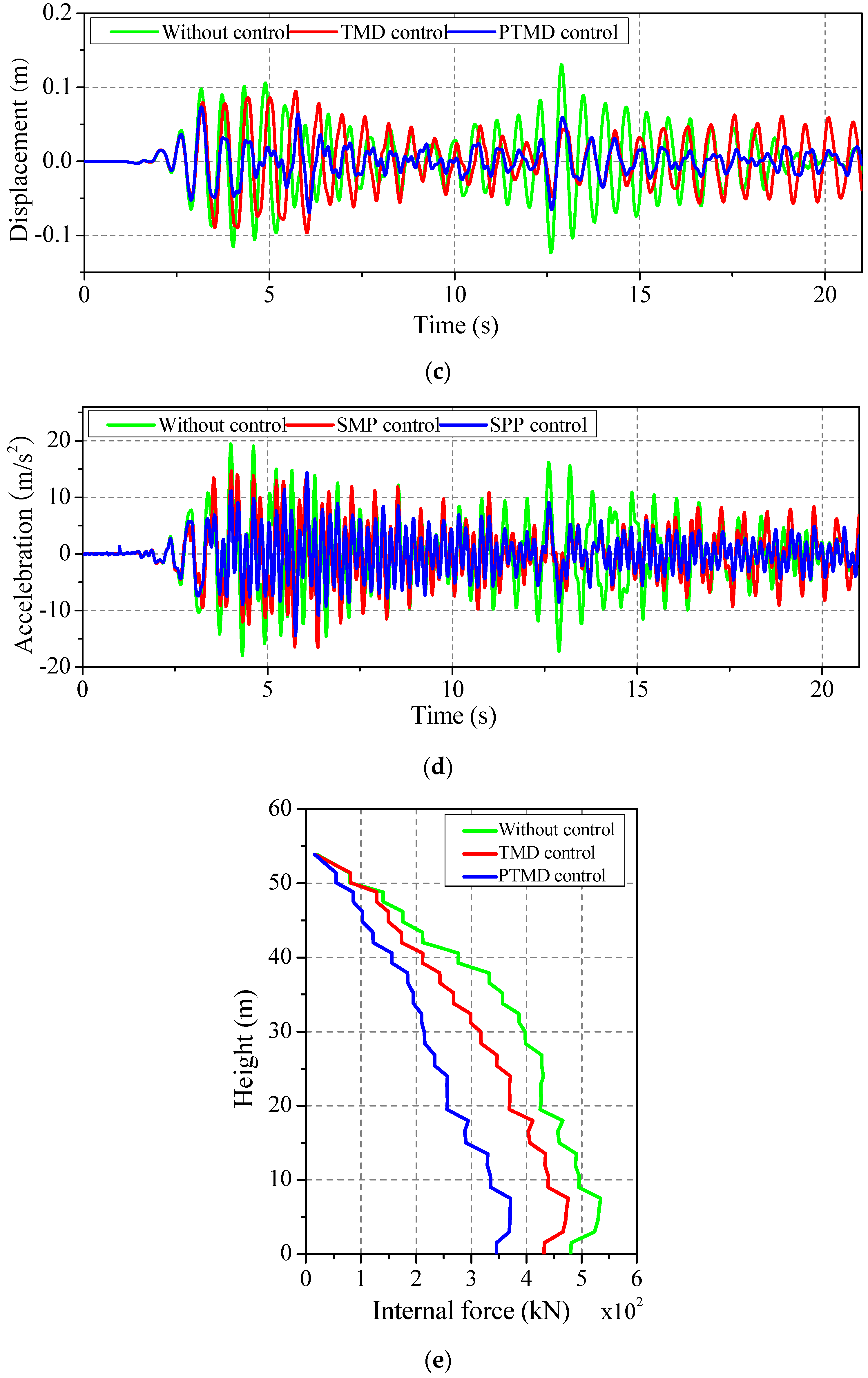
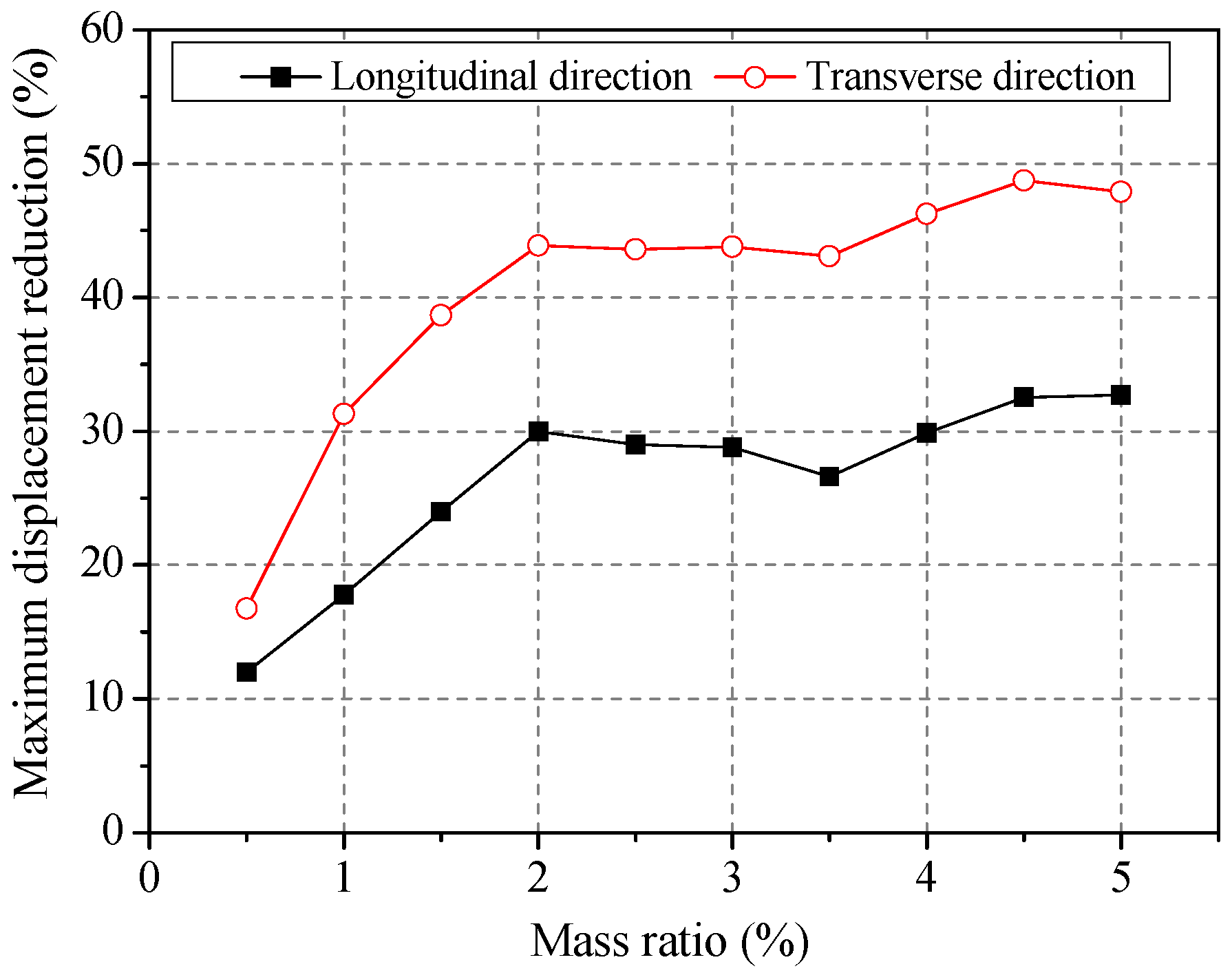
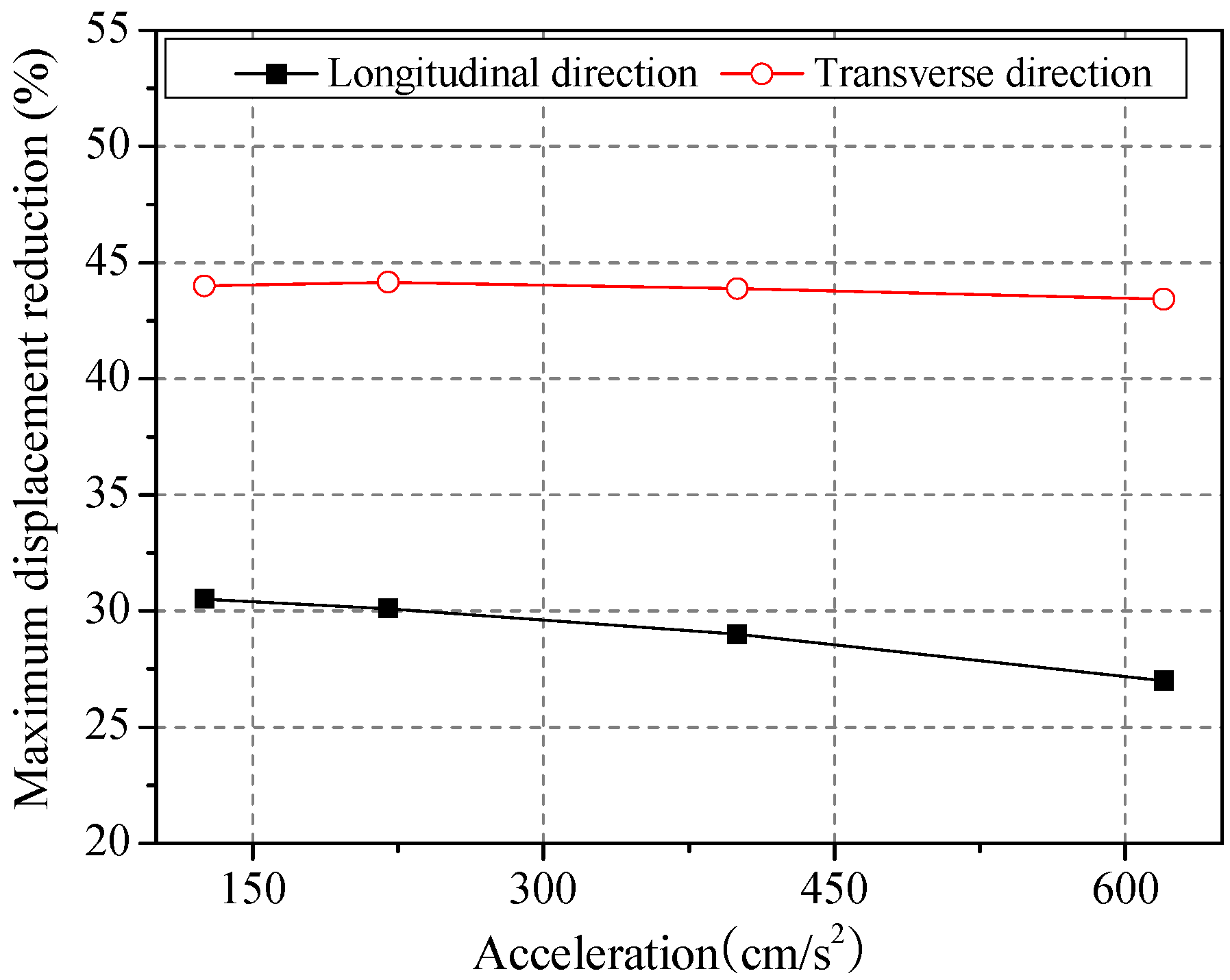

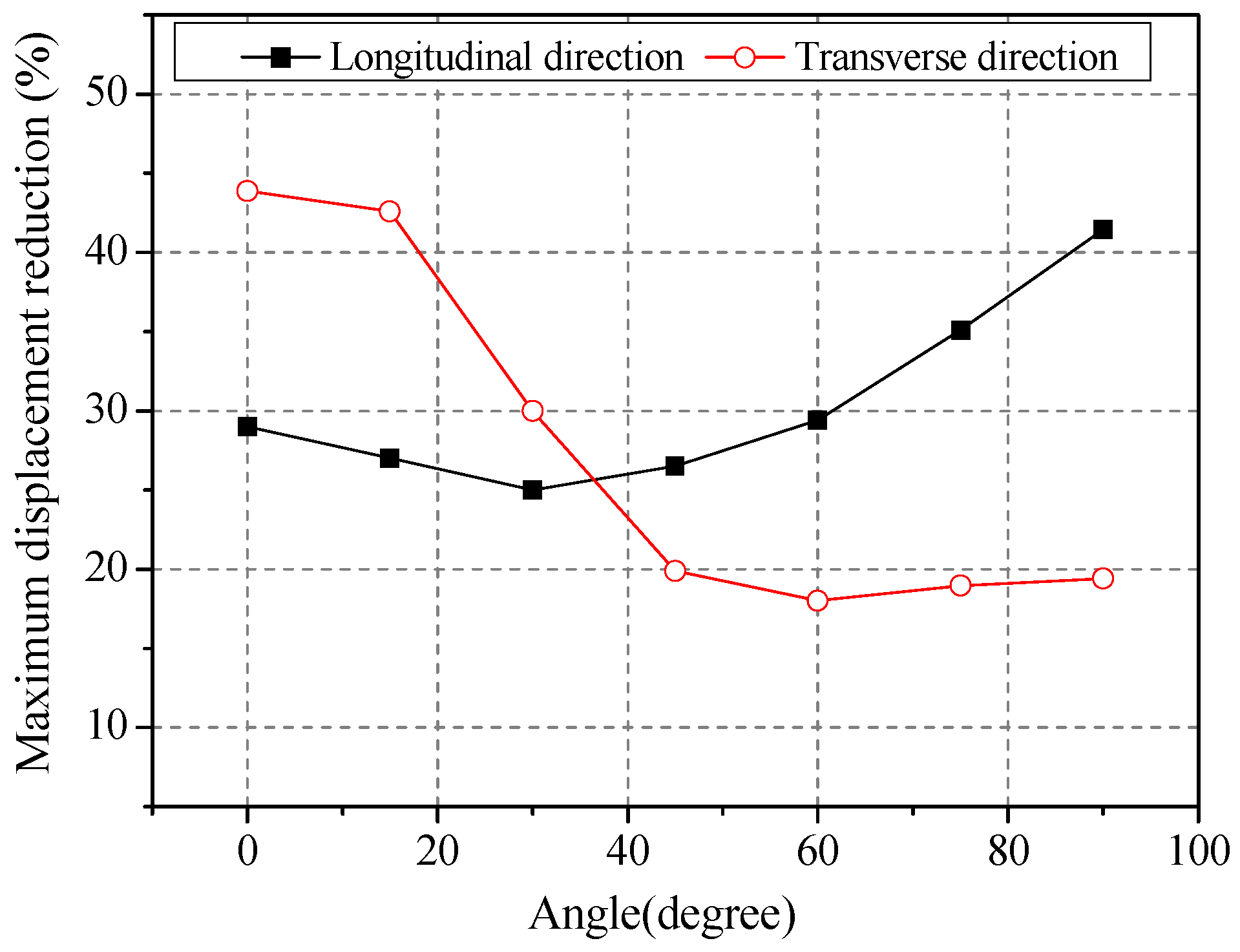
| ID | Earthquake | Event Date | Magnitude | Station |
|---|---|---|---|---|
| EQ1 | Imperial Valley | 18 May 1940 | 6.9 | El Centro |
| EQ2 | Northridge | 17 January 1994 | 6.6 | La-Baldwin Hills |
| EQ3 | Kobe | 16 January 1995 | 6.9 | Oka |
| Seismic Records | Direction | Damper | Displacement | Acceleration | Damper | Axial Internal Force | |||
|---|---|---|---|---|---|---|---|---|---|
| Peak (%) | RMS (%) | Peak (%) | RMS (%) | Peak (%) | RMS (%) | ||||
| El Centro | X | TMD | 21 | 36 | 33 | 38 | TMD | 10 | 15 |
| PTMD | 29 | 54 | 37 | 52 | |||||
| Y | TMD | 26 | 12 | 15 | 16 | PTMD | 28 | 37 | |
| PTMD | 44 | 54 | 26 | 36 | |||||
| Northridge | X | TMD | 57 | 66 | 44 | 54 | TMD | 26 | 25 |
| PTMD | 63 | 71 | 51 | 58 | |||||
| Y | TMD | 39 | 33 | 23 | 13 | PTMD | 31 | 30 | |
| PTMD | 52 | 47 | 28 | 18 | |||||
| Kobe | X | TMD | 33 | 65 | 54 | 53 | TMD | 8.0 | 15 |
| PTMD | 47 | 74 | 70 | 54 | |||||
| Y | TMD | 30 | 26 | 36 | 28 | PTMD | 27 | 29 | |
| PTMD | 54 | 70 | 65 | 55 | |||||
© 2017 by the authors. Licensee MDPI, Basel, Switzerland. This article is an open access article distributed under the terms and conditions of the Creative Commons Attribution (CC BY) license (http://creativecommons.org/licenses/by/4.0/).
Share and Cite
Tian, L.; Rong, K.; Zhang, P.; Liu, Y. Vibration Control of a Power Transmission Tower with Pounding Tuned Mass Damper under Multi-Component Seismic Excitations. Appl. Sci. 2017, 7, 477. https://doi.org/10.3390/app7050477
Tian L, Rong K, Zhang P, Liu Y. Vibration Control of a Power Transmission Tower with Pounding Tuned Mass Damper under Multi-Component Seismic Excitations. Applied Sciences. 2017; 7(5):477. https://doi.org/10.3390/app7050477
Chicago/Turabian StyleTian, Li, Kunjie Rong, Peng Zhang, and Yuping Liu. 2017. "Vibration Control of a Power Transmission Tower with Pounding Tuned Mass Damper under Multi-Component Seismic Excitations" Applied Sciences 7, no. 5: 477. https://doi.org/10.3390/app7050477





